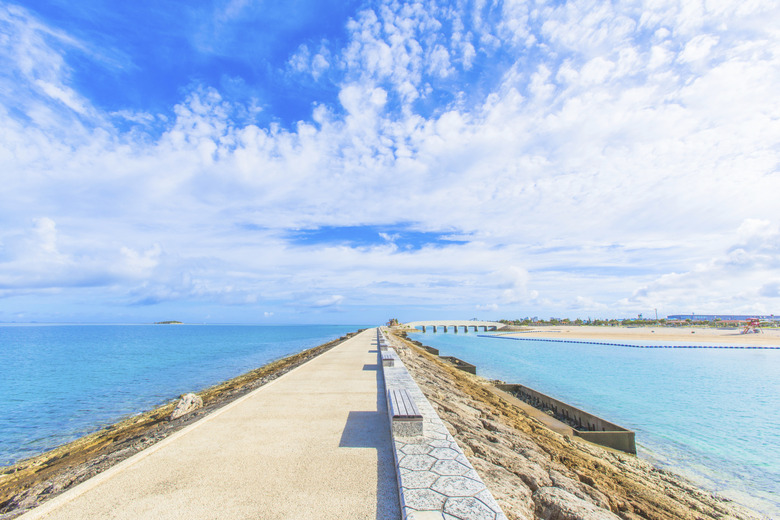Pros & Cons Of Breakwaters
Breakwaters are erosion-control structures that usually run parallel to the shore to protect the shore from the full force of incoming waves. There are two basic types of breakwater: floating and fixed. Breakwaters are intended to protect homes and beaches, but as man-made structures they have some aesthetic and environmental disadvantages.
Advantages of Floating Breakwaters
Advantages of Floating Breakwaters
Floating breakwaters are moored, box-like or pontoon-like structures placed out from the shoreline to break up wave intensity. Floating breakwaters are effective in wave heights of less than 6.5 feet. They are appropriate for use in areas where poor soil conditions make a fixed breakwater unfeasible and are less expensive to install than fixed breakwaters. Floating breakwaters do not interfere with water flow, fish migration or the movement of sediment and can be easily moved or rearranged. Floating breakwaters are also often more aesthetically pleasing than fixed breakwaters.
Disadvantages of Floating Breakwaters
Disadvantages of Floating Breakwaters
Floating breakwaters are not effective in areas with high or fast-moving waves. In heavy storms these breakwaters are subject to failure, and if they come detached from their moorings they can become a danger. Floating breakwaters have the advantage of being detachable when not in use, but the labor costs to replace the breakwater can be high when compared to a fixed breakwater.
Advantages of Fixed Breakwaters
Advantages of Fixed Breakwaters
Fixed breakwaters usually consist of mounded rubble or concrete barriers. These types of breakwaters offer protection from high and fast-moving waves and can still offer protection even if mildly damaged in heavy storms. Stone or rubble dislocated by heavy waves can be easily repaired without having to replace the entire structure. Some aquatic creatures use breakwaters as a habitat, and fixed breakwaters placed with open segments allow free movement of aquatic wildlife.
Disadvantages of Fixed Breakwaters
Disadvantages of Fixed Breakwaters
Fixed breakwaters are semi-permanent structures that require construction by a knowledgeable person with an understanding of the area's wave transmission. Construction costs can be relatively high when compared to floating breakwaters. Breakwaters that are continuous can pose an ecological hazard when placed in wetlands by barring organisms from entering or leaving. Fixed breakwaters are often an eyesore — an aesthetically displeasing sight on the shoreline.
Cite This Article
MLA
Adams, Sam. "Pros & Cons Of Breakwaters" sciencing.com, https://www.sciencing.com/pros-cons-of-breakwaters-13425585/. 21 July 2017.
APA
Adams, Sam. (2017, July 21). Pros & Cons Of Breakwaters. sciencing.com. Retrieved from https://www.sciencing.com/pros-cons-of-breakwaters-13425585/
Chicago
Adams, Sam. Pros & Cons Of Breakwaters last modified March 24, 2022. https://www.sciencing.com/pros-cons-of-breakwaters-13425585/
